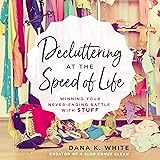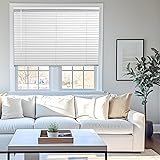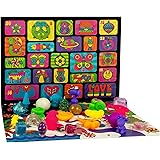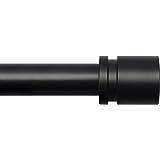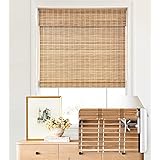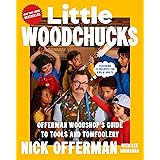The video above brilliantly showcases the transformative power of a 3D pen, turning everyday items into opportunities for creation and repair. It’s a remarkable demonstration of how this innovative tool can breathe new life into seemingly discarded objects, proving that with a little creativity, many things can be given a second chance. While the visuals provide an excellent overview of various DIY projects, delving deeper into the practical applications and benefits of using a 3D pen can truly unlock its potential for everyone, from novice crafters to seasoned makers.
A 3D pen is not just a toy; it is an accessible tool that bridges the gap between imagination and tangible reality. Unlike traditional 3D printers, which require complex software and setup, a 3D pen offers immediate, hands-on creation, allowing users to draw in three dimensions instantly. This simplicity makes it an ideal instrument for a wide array of projects, especially those focused on reuse, recycle, and creative problem-solving. It’s truly amazing what you can “fix” or “make” when you harness the versatility of a 3D pen.
Beyond the Screen: Practical 3D Pen Repairs Around the House
Many people associate 3D pens with intricate artistic creations, but their utility extends far into practical household repairs. Think about those small, frustrating breakages that often lead to an item being discarded. Often, a 3D pen can provide an elegant, cost-effective solution, saving items from the landfill and money from your wallet. It’s a fantastic way to approach problem-solving with a DIY mindset.
For instance, a broken plastic tab on a remote control or a cracked housing on a kitchen gadget doesn’t necessarily mean the end for that item. Using a 3D pen, you can essentially “weld” the plastic back together, or even fabricate a replacement part right on the spot. This process, often referred to as plastic welding, uses the pen’s heated filament to fuse existing plastic components, creating a strong, durable bond. Moreover, if a small hook or bracket breaks off a storage container, you can easily draw a new one, tailored to fit perfectly, demonstrating the true versatility of these pens.
Transforming Trash into Treasure: 3D Pen Upcycling Projects
One of the most exciting aspects of incorporating a 3D pen into your crafting arsenal is its incredible potential for upcycling. Upcycling involves taking discarded items or waste materials and transforming them into products of higher value or quality. Instead of merely recycling materials into their base components, upcycling retains the original form and gives it a new purpose. This approach significantly reduces waste and fosters a more sustainable lifestyle.
Giving Old Items a New Lease on Life with Your 3D Pen
Consider how old plastic bottles, once destined for the recycling bin, can become the foundation for a stunning decorative vase when adorned with intricate patterns drawn by a 3D pen. Similarly, empty cardboard tubes or tin cans can be reinforced and decorated, turning into stylish pen holders or small planters. The ability to add custom textures, reinforce weak spots, or even connect disparate materials makes the 3D pen an invaluable tool for anyone passionate about eco-conscious crafting. This creative freedom truly empowers you to see potential where others might only see waste.
From Imagination to Reality: Designing Unique 3D Pen Crafts
The video highlights some incredibly ambitious projects, like creating a DIY helicopter or a BBQ grill, showcasing the immense potential for design and construction with a 3D pen. While these examples might seem daunting, they illustrate the core principle: if you can imagine it, you can often draw it into existence. The process involves building layer by layer, allowing for complex geometries and functional designs that might be difficult to achieve with traditional crafting methods.
Building Miniature Worlds: DIY Helicopters, BBQ Grills, and More
For beginners, starting with smaller, less complex projects is advisable. You might create intricate jewelry, custom phone stands, or decorative ornaments. As your skills develop, you can graduate to more elaborate creations, perhaps even designing functional parts for hobbies or prototypes for inventions. The key is understanding how to build stable structures and connecting different pieces securely. With patience and practice, those miniature helicopters and grills move from mere inspiration to achievable reality, proving the sky is the limit for 3D pen projects.
Getting Started: Essential Tips for Your 3D Pen Journey
Embarking on your 3D pen adventure is exciting, but a few foundational tips can significantly enhance your experience and the quality of your creations. Understanding the basics can prevent common frustrations and help you unleash your creative potential more effectively.
- Choose the Right Filament: Most 3D pens use PLA or ABS filament. PLA is generally easier for beginners, as it prints at lower temperatures and is less prone to warping. ABS is more durable but requires better ventilation.
- Master Temperature Settings: Each filament type and brand has an optimal temperature range. Experiment to find the sweet spot where the plastic flows smoothly without being too runny or clumpy.
- Work on a Stable Surface: A flat, heat-resistant surface is crucial for building sturdy bases and ensuring your early layers adhere correctly. A non-stick mat can be incredibly helpful.
- Practice Basic Shapes: Before tackling complex projects, practice drawing straight lines, circles, and simple geometric forms. This builds muscle memory and control.
- Ensure Good Ventilation: While PLA fumes are generally mild, working in a well-ventilated area is always recommended, especially when using ABS filament.
- Start Small and Simple: Don’t try to build a helicopter on your first go. Begin with small repairs or simple decorative items to get a feel for the tool.
Embracing Sustainability: How 3D Pens Promote Reuse and Reduce Waste
At its heart, the ethos of using a 3D pen for repairs and upcycling aligns perfectly with sustainable living principles. In an age of disposable consumerism, having a tool that encourages mending rather than replacing, and transforming rather than discarding, is incredibly valuable. This approach not only saves resources but also reduces the amount of waste sent to landfills, contributing positively to our environment.
By empowering individuals to take ownership of their belongings and extend their lifespan, 3D pens foster a mindset of resourcefulness and creativity. It’s about seeing value in what others might overlook and applying a little ingenuity to make a significant difference. Ultimately, a 3D pen isn’t just a gadget; it’s a gateway to a more sustainable, creative, and “fixed” way of life.


